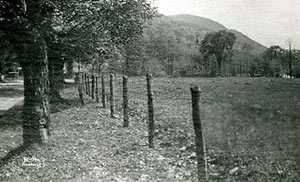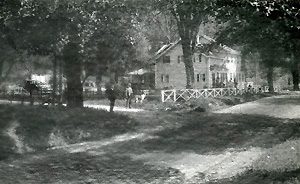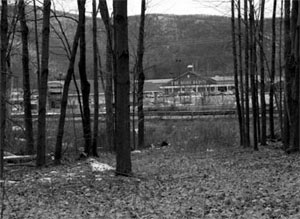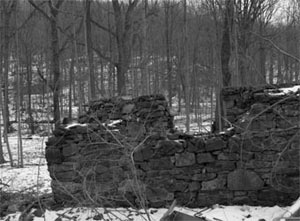Revolutionary War-Era Fishkill Supply Depot Threatened

Listed on the National Register of Historic Places in 1974, New York’s Revolutionary War-era Fishkill Supply Depot historic archaeological district represents one of the least understood threatened cultural landscapes in the nation.
Established by General George Washington, the Fishkill Supply Depot thrived as a sophisticated military city center for the bulk of the Revolutionary War. The self-contained establishment—one of the most extensive of its time—functioned as a small city and the site of one of the largest early military cemeteries in the nation. In spite of its great historical significance, in the latter half of the 20th century, rapid suburbanization obscured its stories and threatened its preservation. While the heart of the complex remained, much of the cultural landscape was sacrificed for commercial development. Currently, two essential open space properties at the heart of the Depot Complex are at risk of further development.
In the town of Fishkill, several miles from the Hudson River and surrounded by the Hudson Highlands, lies the physical space that defines the Fishkill Supply Depot. Stretching over more than 70 acres on both sides of the heavily trafficked Route 9 in Fishkill and trimmed by Interstate 84, a portion of the site is now home to the Dutchess Mall, built in the early 1970s and a Hess gasoline station, built in the 1990s. Although it remains true that aspects of the site have been impacted by prior commercial development, critical areas of this historic landscape remain, and are now threatened with a fresh round of development.
History


20th century images of Fishkill Supply Depot prior to development
impact. (upper) View southwest; (lower) View south towards Moog's
Farm. Photos by John and Walter McDonnell.
Established by command of General George Washington in 1776, thousands of Continental troops, Militia, and their families, resided at the Depot complex until April 1783, five months before the Treaty of Paris was signed ending the Revolutionary War. Funded by the Continental Congress, this military “nerve center” matured into the central and most extensive Northern military logistical center for munitions and war supplies of all types. The highest level of American technology was in action at the Fishkill Supply Depot. Simultaneously, it was home to a medical complex, a prison facility, powder magazines, store houses, artillery park and numerous artisan workshops—as well as residences for officers and barracks for thousands of soldiers during the fight for independence. Although under British surveillance, the Depot was never attacked. Its stalwart position in the Hudson River Valley prevented enemy advances. General George Washington stated the war would simply not have been won without the Fishkill Supply Depot.
Although the Depot itself was never under fire, hundreds—likely thousands, perished there. War wounds, hypothermia, dysentery, and small pox were leading causes of death. Periods of starvation were also endured by troops during the Depot's seven years of service.
In the 1960s and 1970s archaeological excavations helped bring attention to the Fishkill Depot property. These surveys helped spur the restoration of the officer’s headquarters—the Van Wyck Homestead—by the Fishkill Historical Society. The restored structure is now home to the Van Wyck Homestead Museum.


(upper) Present day development, courtesy of Stefan Baumann;
(lower) Partial ruin, Fishkill Supply Depot, courtesy of Stefan
Baumann.
In the Spring of 2006, as plans for further commercial development were gathering steam, local historians and activists banded together to advocate for permanent protection of the properties within the Fishkill Supply Depot historic district. The first step taken by the group, now known as Friends of the Fishkill Supply Depot, was to lobby for further archaeological review of the endangered acres. Through extensive study of previous archaeological reports, it became clear that the undeveloped acres contained important unrecorded archaeological resources. Previous cultural resource management surveys had recommended these properties simply be written off and developed. Signatories of a petition calling for further review, included archaeologists, historians, environmentalists, and concerned citizens throughout the country. The group’s advocacy work, pressing for further study proved successful and further archaeological work was conducted with a refined methodology geared to Revolutionary War military sites.
It was during this final round of testing that a significant archaeological discovery was made on the grounds of the Fishkill Supply Depot—on one of the parcels primed for commercial retail development. Archaeologists working closely with the New York State Office of Historic Preservation’s archaeological program analyst, uncovered part of a large soldiers’ burial ground. Evidence indicates the presence of hundreds of graves, a monumental discovery, as the exact placement of one of the nation’s first and largest identified military cemeteries known to exist in the area has eluded historians and archaeologists for decades. Current research suggests that this is the largest Continental Army Burial Complex identified in our country’s history.
Threat
The at-risk properties within the boundaries of the Fishkill Supply Depot historic archaeological district are currently for sale or under private ownership. Their fate remains unclear. Senator Charles Schumer has been leading the preservation efforts in D.C. and has vowed to protect the historic lands of the Depot and the Continental Army Burial Complex as a sacred place of national memory. However, unless funding is secured and these properties are permanently taken off the market, the threat to this cultural landscape remains.
Get Involved
If you or your organization would like to contribute resources or a letter advocating the protection of the endangered lands of the Fishkill Supply Depot, please send an e-mail to info@fishkillsupplydepot.org or write directly to: Friends of the Fishkill Supply Depot, PO Box 311, Fishkill, NY 12524. Volunteers are also encouraged to get involved in a range of research activities and events held throughout the year.




